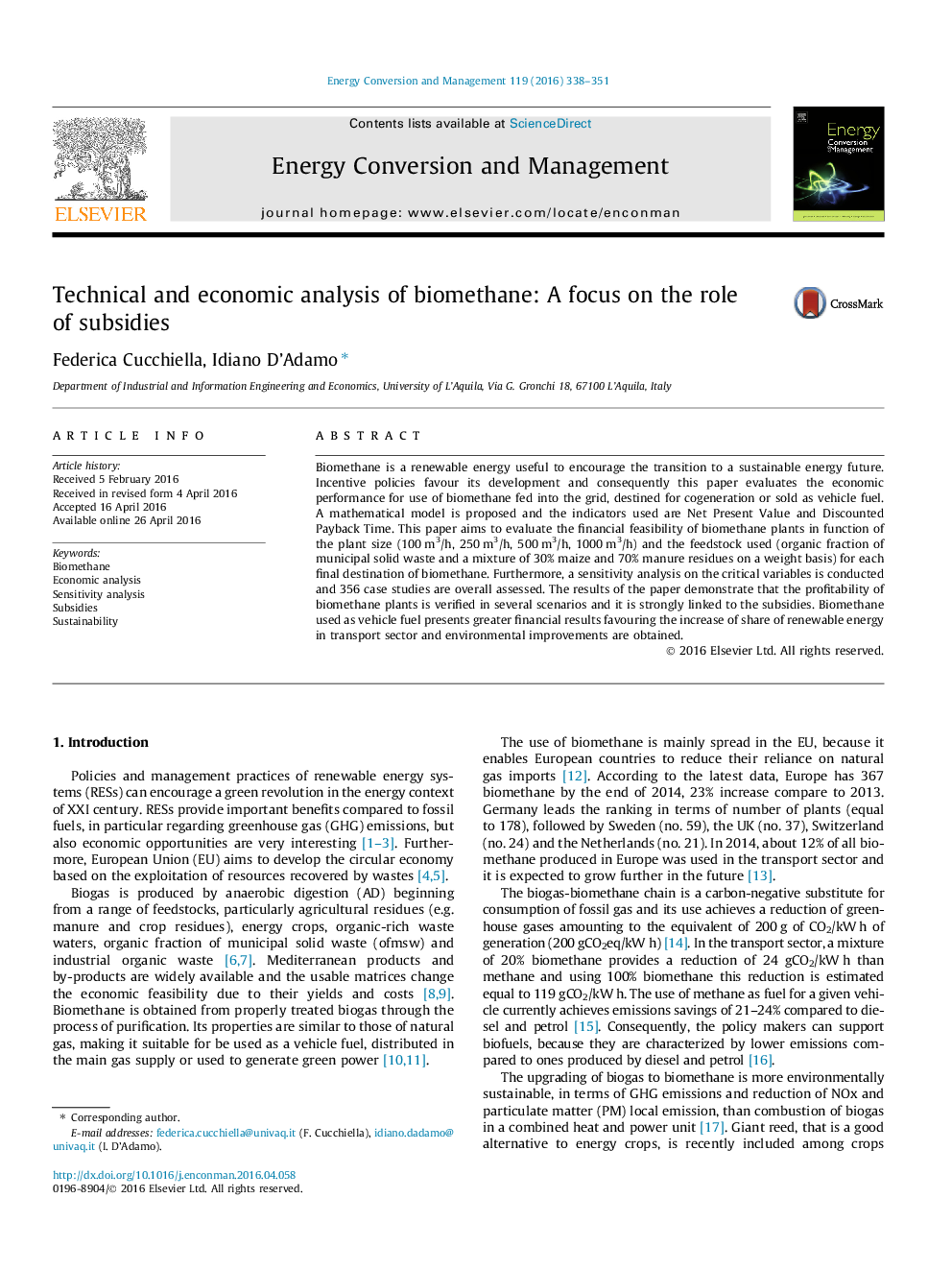| Article ID | Journal | Published Year | Pages | File Type |
|---|---|---|---|---|
| 765192 | Energy Conversion and Management | 2016 | 14 Pages |
•The presence of subsidies is a condition necessary for the profitability of the biomethane plants.•Biomethane produced by ofmsw substrate is basically positive for all sizes analysed.•Biomethane produced by mixed substrate presents positive NPV only in few scenarios.•Medium-large plants (500–1000 m3/h) achieve greater financial results.•Italian legislators tend to favour the biomethane used as vehicle fuel.
Biomethane is a renewable energy useful to encourage the transition to a sustainable energy future. Incentive policies favour its development and consequently this paper evaluates the economic performance for use of biomethane fed into the grid, destined for cogeneration or sold as vehicle fuel. A mathematical model is proposed and the indicators used are Net Present Value and Discounted Payback Time. This paper aims to evaluate the financial feasibility of biomethane plants in function of the plant size (100 m3/h, 250 m3/h, 500 m3/h, 1000 m3/h) and the feedstock used (organic fraction of municipal solid waste and a mixture of 30% maize and 70% manure residues on a weight basis) for each final destination of biomethane. Furthermore, a sensitivity analysis on the critical variables is conducted and 356 case studies are overall assessed. The results of the paper demonstrate that the profitability of biomethane plants is verified in several scenarios and it is strongly linked to the subsidies. Biomethane used as vehicle fuel presents greater financial results favouring the increase of share of renewable energy in transport sector and environmental improvements are obtained.
